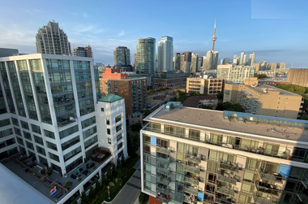BQNA
Air Quality Study
Campus-Community Partnership for Reducing Air Pollution in the Bathurst Quay Neighborhood
Project Motivation and Background
During spring/summer 2019, representatives from BQNA met with the research team, Billy Bishop Airport, the City of Toronto and identified the following project objectives:

Understand population exposure and the contribution of different sources (e.g., from the airport, highways, arterials, regional background, etc.) to air pollution in the neighbourhood.

Disseminate knowledge that can help inform planning/policy regarding land-use, transportation, and airport operations.


Key Findings
- On average, the concentrations of the air pollutants measured in Bathurst Quay are similar to other urban locations in Toronto.
- The airport is a major source of ultrafine particles (UFP) in the neighbourhood.
- Ferry electrification brought measurable reduction in the concentrations of some air pollutants.
Sampling Campaign

Fixed monitors at rooftop
& ground level throughout community

Indoor/outdoor monitoring
using low-cost sensors

Mobile sampling to map
near-road air pollution
Measurements:
– PM2.5 (Particulate Matter with a diameter less than 2.5 micrometers), NOx (Nitrogen Oxides), O3 (Ozone), CO (Carbon Monoxide), UFP, Black Carbon (BC), and trace metals
– Jan 21-Feb 27, 2020, Apr 20-Jun 6, 2020, Jul 27-Sep 14, 2020, Jun 8-Jul 18, 2022
Measurement Sites

Measurements on the airport tarmac were not allowed due to airport security restrictions.

7-story
900m from the airport runway

7-story
800m from the airport runway

2-story
650m from the airport runway
Research Questions

Understand population exposure and the contribution of different sources to air pollution in the neighbourhood

Disseminate knowledge that can help inform planning/policy regarding land-use, transportation, and airport operations
Conclusions
Q1: How do UFPs at Bathurst Quay compare with other locations?
On average, Bathurst Quay has UFP concentrations similar to other locations in Toronto.
Q2: Under which conditions do higher UFP levels occur?
Under southerly winds when the airport is operating, especially during aircraft landing/takeoff.
Q3: What is the impact of various sources on UFP levels?
The airport flight and ground activities are major sources of UFP. Electrifying the ferry provided a substantial (8%- 16%) reduction.